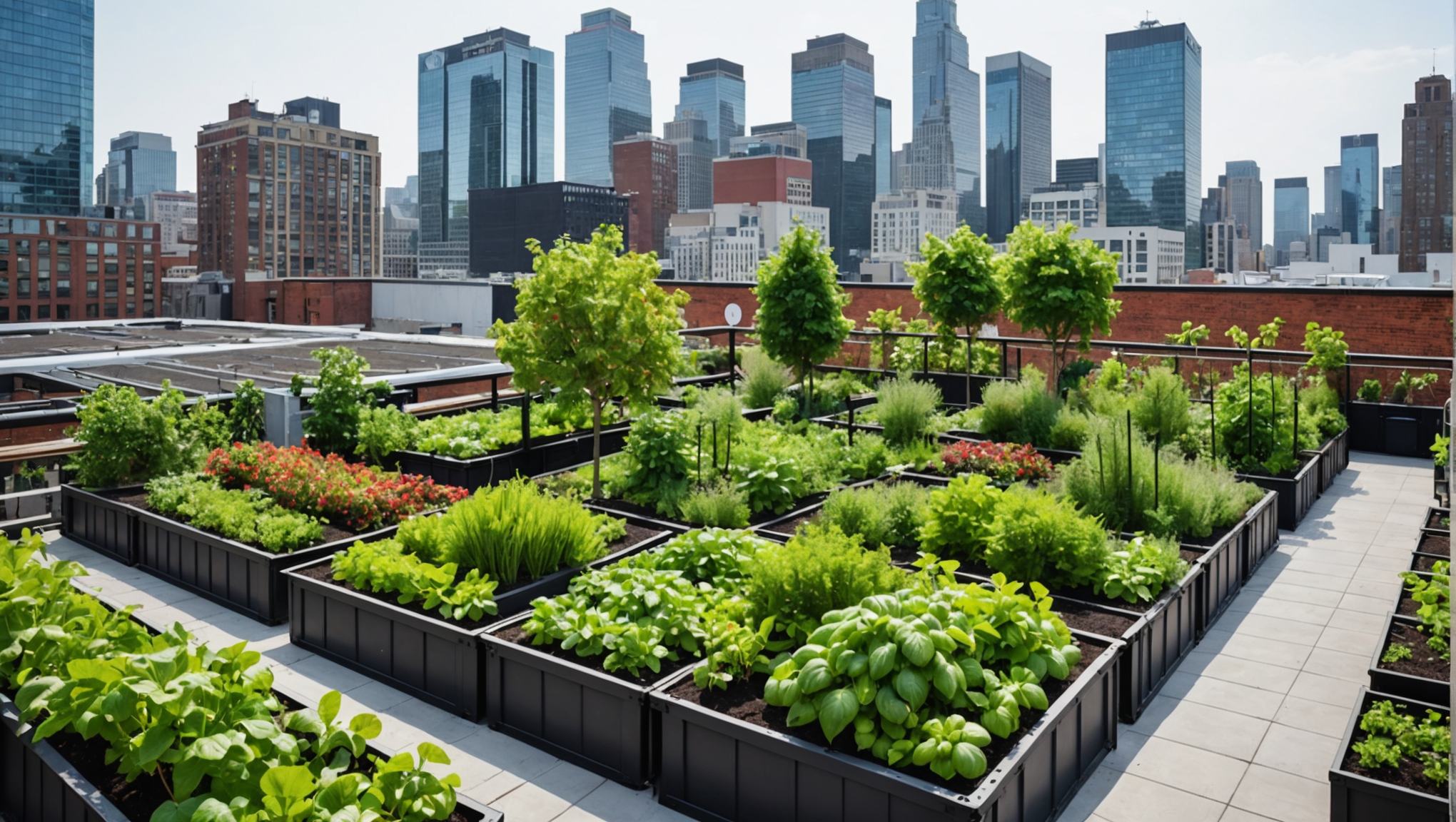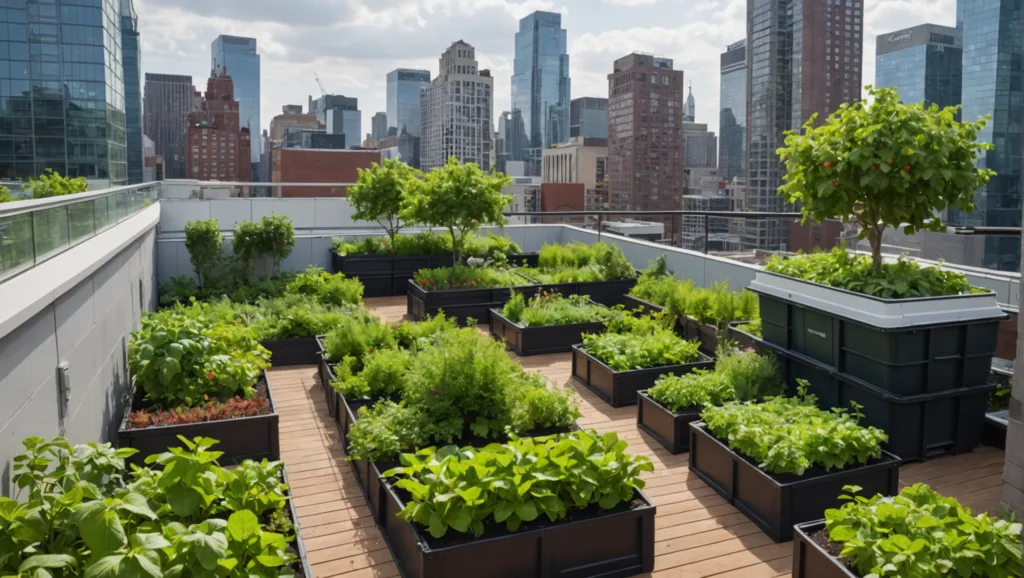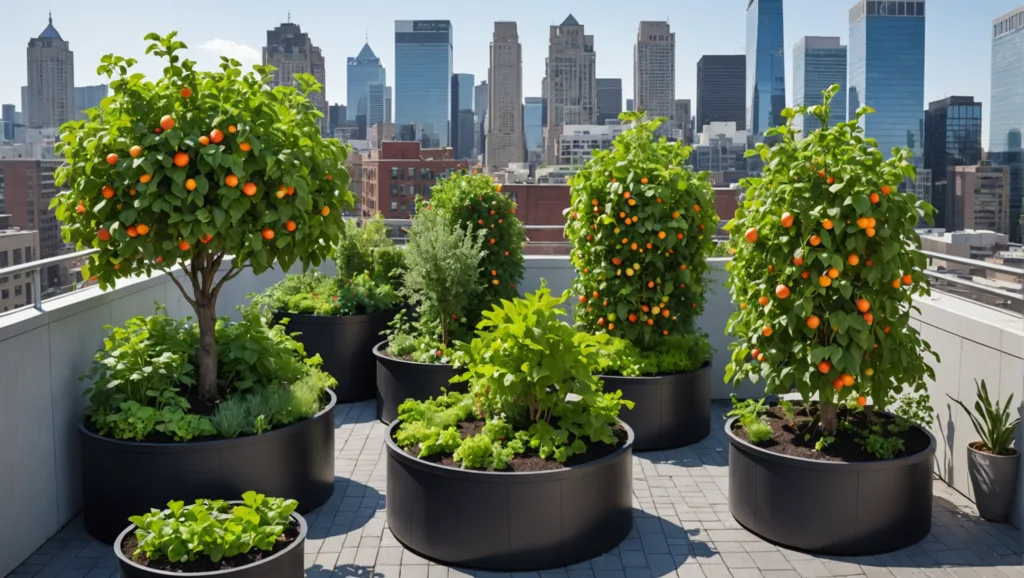Understanding Urban Permaculture
Understanding Urban Permaculture encompasses a unique and sustainable approach to designing and maintaining the urban landscape. This innovative design system fundamentally involves conscious planning and management of agricultural ecosystems in a manner that mimics the natural biome. Urban permaculture transforms the confines of city or town life into a green, self-sustaining oasis amid the concrete, shaping the urban environment to support sustainable living. Although seemingly incepted in contrast with the concept of rural permaculture, it can yield a rewarding garden even in urban settings if executed aptly. The crucial concept of urban permaculture revolves around creating a harmonious interaction between the dwellers and their urban environment. This includes within its sphere, a sustainable garden or even a small space being developed into a permaculture garden, which promotes the interdependent growth of annual and perennial plant species that are both beneficial and necessary for the urban dweller.

Urban permaculture practices present an exciting opportunity for urban dwellers to grow their own food right within their small garden or container gardening spaces, making it much more than just a gardening project. The essence of urban permaculture inevitably lies in its ability to utilize limited space ingeniously. Even rooftop spaces are revamped to cultivate an urban food supply, using compost and rainwater harvesting systems as crucial parts of the sustainable garden. A successful urban permaculture design may comprise a food forest made up of different layers such as an upper canopy of fruit trees, an understory of shrubs, and a ground layer of herbaceous plants. The elements involved typically include:
- Composting systems
- Small-scale edible plant production using perennial food crops
- Establishment of perennial mulch cover
- Incorporating food source trees and shrubs into an already existing landscape
- Sustainable practices involving water feature utilization and waste recycling
These principles of permaculture then, adapted to urban settings, allow for a rejuvenated, green environment amidst a bustling city and offer a productive way for city dwellers to contribute to a sustainable future.
Essentials of Permaculture Design in an Urban Setting
Permaculture in urban environments is a concept that offers sustainable strategies for creating productive, environmentally friendly spaces within densely populated regions. This system embodies conscious design principles adapted from the original permaculture notions outlined by environmentalist Bill Mollison. The essentials of urban permaculture design heavily revolve around the intelligent use of the limited physical space available—maximizing the area to grow food by implementing strategies such as vertical gardening, container farming, and rooftop gardening. Some popular crops grown include kitchen garden staples, herbs for a herb garden, and produce for community food forests.
Another crucial aspect of this permaculture system is the creation of urban food forests and community gardens. It’s not just about growing your own food; urban permaculture – the ultimate guide lies in fostering a sense of community and encouraging sustainable food production among city dwellers.
For example, a successful permaculture designer will teach you tips for adapting permaculture principles to urban settings such as:
- Utilizing south-facing walls or balconies, if you live in an apartment, to grow climbing plants and maximize sunlight exposure
- Implementing “Zone 5” strategies in urban and suburban areas by creating spaces that mimic natural ecosystems
- Considering water catchment options within the urban context
Whether you’re new to permaculture or a seasoned practitioner looking to expand your knowledge, a permaculture design course or resources from the Permaculture Research Institute can be invaluable tools. The overarching goal of this approach to urban farming is empowering individuals and communities to re-imagine the way we design our cities and neighborhoods, creating a sustainable, resilient urban landscape where everyone can thrive.
Food Forest: Turning an Urban Environment Into a Thriving Ecosystem
The concept of a Food Forest is an exciting and innovative approach to using permaculture principles in urban areas. As populations boom and green spaces diminish, finding a space to grow our food, and more importantly, to do it sustainably, becomes invariably crucial. Food Forests, primarily a part of permaculture practices, are transforming urban environments into thriving ecosystems. The crux of this method lies in mimicking natural ecosystems that are self-sustaining and functional over time. By creating layered structures of trees, shrubs, ground cover crops, and root vegetables, urban permaculture gardens not only provide food sources but also promote rich biodiversity right in the heart of our concrete jungles.

People who live in urban areas often deal with limited space but have a desire to produce food and contribute to their local ecosystems. This is where the concept of urban permaculture comes into play, and permaculture can help us achieve these goals in a variety of ways. For example:
- Urban permaculture aims to make the most effective use of available space, with multi-tiered gardens that allow different plants to cohabit, much like they would in a natural ecosystem.
- If you want to grow your own food, but lack garden space, vertical gardens are an excellent solution. They not only save space but also offer an innovative and aesthetically pleasing way to design your own food source.
- Community-based projects can help to create sustainable food sources while fostering a connection between people, a sense of community belonging, and an appreciation for the natural world. The permaculture community thrives on collaboration, education, and shared resources.
Making the switch to an urban permaculture garden is not solely about organic gardening; it’s about taking responsibility for our environment, our health, and our communities. Whether you’re just starting to grow food or are a seasoned urban farmer, creating a food forest is a robust and resilient way to produce food and make permaculture a crucial part of city living.
Practical Implementation of Permaculture Zones in Urban Garden
Living in an urban area imposes unique challenges but also opportunities when it comes to the practical implementation of permaculture zones in an urban garden. The concept of permaculture is centered on the creation of sustainable, self-sufficient systems, traditionally designed around the contours, climate, and characteristics of a rural environment. However, with growing urbanization across the globe, enthusiasts and practitioners are finding innovative ways to integrate the principles of permaculture within an urban environment.
The process of growing food in these conditions begins with the effective utilization of available space. Although urban areas have less open ground, they provide many alternative options such as rooftop gardening, vertical gardening, or container gardening. An urban permaculture garden should be designed for maximum productivity while also accommodating biodiversity. These gardens are divided into several zones according to the frequency with which they need care, mimicking the patterns and interactions found in natural ecosystems.
Here is a possible zoning strategy:
- Zone 0 – The home, full of indoor plants for clean air and creating a wholesome indoor environment.
- Zone 1 – Areas around the home kept for cultivated plants that require regular care, such as herbs and salad greens.
- Zone 2 – Less frequently visited areas, for growing perennial plants and small fruit trees.
- Zone 3 – The area for larger fruit and nut trees, which require less frequent visits.
Undoubtedly, to make your permaculture garden successful, it’s crucial to carry out a detailed site analysis before starting. Consider variables such as sunlight exposure, soil quality, prevailing winds, and the availability of water sources. Such planning will significantly increase the longevity and productivity of the garden, making the effort worthwhile. The urban permaculture garden, with its inherent challenges, is certainly an opportunity for the practitioner to apply the concept of permaculture in innovative and compelling ways.
The Principles of Permaculture: Establishing Sustainability in the City
Permaculture is a pioneering approach focusing on the development of sustainable and self-sufficient agricultural systems. By imitating natural ecosystems, permaculture nurtures the idea of harmonious integration of landscapes with people. In urban environments, where space is most often a limiting factor, permaculture aids in transforming even the smallest spaces into lush, green paradises while combating issues like pollution and food insecurity. Additionally, urban permaculture helps promote local food production, reducing waste, and inversely increasing biodiversity, turning cities into more livable, sustainable environments.

Urban permaculture is not just about integrating green spaces; it embodies several principles that aim to establish sustainability within city confines. Some of these principles include:
- Building on natural ecosystems: Urban permaculture helps harness the power of natural systems to sustain life, create habitats for local fauna, and encourage pollinators.
- Efficient use of resources: It promotes recycling and effective waste management to reduce pollution and encourage self-sustainability.
- Locally adapted design: Designs are tailored to local conditions, embracing the climate, topography, local materials, and community values.
- Continuous active learning and adaptation: The approach encourages lifelong learning, constant adaptation, and innovation, promoting resilience in the face of changing circumstances.
By adopting these principles of permaculture, cities can propagate environments that flourish with life while harmonizing human existence with Mother Nature.
Learning from Real-Life Urban Permaculture Projects: Beacon Food Forest in Seattle
The Beacon Food Forest in Seattle stands as an exemplary embodiment of real-life urban permaculture projects. Developed on a public piece of land, this space engages community empowerment, food security, and environmental sustainability in a pioneering manner. In essence, this park employs permaculture principles to cultivate an edible urban oasis, which mimics a natural ecosystem, by encompassing various layers of vegetation such as large trees, perennial plants, and ground cover species. Impressively, Beacon Food Forest showcases how permaculture can help transform a simple urban lot into a lush, self-sustaining green space, engendering profound implications for urban dwellers, city planners, and environmental enthusiasts worldwide.
From an educational perspective, observing the Beacon Food Forest’s systemic approach reveals crucial learning points that can be applied to other urban permaculture projects. Some of these include:
- Prompt community involvement and education, which enhances stewardship and cultivates environmental awareness.
- Integration of native and perennial species, promoting biodiversity and the attraction of beneficial insects.
- Implementing water conservation tactics, such as swale systems and rainwater harvesting structures.
Through these lessons, Beacon Food Forest underscores the potential of urban permaculture. This project not only serves as a model for sustainable food production in urban areas, but it also promotes collaborative community involvement, fostering a greater sense of responsibility towards our environment.
Educating for Future: Learn About Food Production Through Urban Gardening
In an era where sustainable living has become increasingly important, the concept of urban gardening offers a unique doorway to understanding food production and preparation methods. Urban gardening, in essence, is the cultivation, processing, and distribution of food in an urban environment, providing an insight into the cycle of food growth and the benefits it can have on the community and environment. This practice is gaining prominence in educational settings, as it serves to enhance the connection between humans and our food sources. Learning about food production through urban gardening fosters an appreciation for the environment, facilitates understanding of sustainability practices, and educates students about healthy eating habits.
Here’s where permaculture help comes in. Permaculture is an approach to designing human settlements and agricultural systems that are modeled on the relationships found in natural ecologies. It provides a framework that urban gardening can thrive and allows learners to understand the principles of food production at a deeper level. Permaculture principles, coupled with hands-on gardening skills, can empower students to:
- Understand the importance of biodiversity and natural ecosystems.
- Learn about the intricacies of food growth and harvest cycles.
- Develop a nuanced understanding of waste management, composting, and recycling.
- Appreciate the value of local, organic food and the role they play in healthy eating.
In bringing food production closer to home, students can witness and engage in the fascinating journey from seed to plate. Consequently, they gain a deeper understanding of the realities and challenges of food production, arming them with knowledge and skills that are crucial for fostering a sustainable future. This holistic education not only encourages responsible environmental stewardship but also nurtures a generation that values and prioritizes sustainable practices in food production and consumption.
Conclusion
Permaculture, the practice of integrating sustainable agriculture and ecological design, offers significant help in creating self-sufficient and resilient systems. It advances the idea of working closely with nature, rather than against it, promoting a harmonious relationship between humans and their environment. As a notable endeavor, it can make a substantial difference in conserving our planet by encouraging efficient use of resources, recycling waste, and preserving biodiversity.
Permaculture creates resilient ecosystems that provide for people’s needs in a sustainable manner, cultivating a better understanding of our mutual dependency on nature and inspiring individuals to affect constructive change in their local environments. Moreover, it helps link communities, highlighting that collective action is integral in building a sustainable future. Therefore, the essence of permaculture goes beyond agriculture and horticulture; it is a potent tool for reshaping our society, improving our lives, enhancing biodiversity, and tackling major environmental issues. Overall, it provides us with a holistic, pragmatic, and ethical approach to caring for the planet and each other.
FAQ’s:
Q1. What is urban permaculture?
A1. Urban permaculture is a sustainable gardening technique that focuses on creating a self-sustaining ecosystem in urban areas. It helps to create a more sustainable and resilient environment in cities.
Q2. How does permaculture help in urban areas?
A2. Permaculture helps to create a more sustainable and resilient environment in urban areas by utilizing natural resources and creating a self-sustaining ecosystem. It also helps to reduce the environmental impact of cities by reducing the need for artificial inputs.
Q3. What are the benefits of urban permaculture?
A3. Urban permaculture has many benefits, including reducing the environmental impact of cities, creating a more sustainable and resilient environment, and utilizing natural resources to create a self-sustaining ecosystem.
Q4. What are the principles of urban permaculture?
A4. The principles of urban permaculture include utilizing natural resources, creating a self-sustaining ecosystem, and reducing the environmental impact of cities.
Q5. What are the techniques used in urban permaculture?
A5. Urban permaculture utilizes techniques such as composting, water harvesting, and soil building to create a self-sustaining ecosystem in urban areas.
Q6. How can I get started with urban permaculture?
A6. To get started with urban permaculture, you can start by researching the principles and techniques of permaculture and then finding a local permaculture group or organization to join.
Q7. What are the challenges of urban permaculture?
A7. The challenges of urban permaculture include limited space, limited resources, and the need to work within existing urban infrastructure.

Khubon Ishakova
Khubon Ishakova is a trailblazer in the world of sustainable solutions, constantly seeking innovative ways to promote eco-conscious living. With a passion for environmental impact, Khubon invites you to explore and embrace sustainable choices that make a positive difference. Join the movement towards a greener and more sustainable world.


 Permaculture And Soil Health | Building Fertile – Resilient Soil
Permaculture And Soil Health | Building Fertile – Resilient Soil